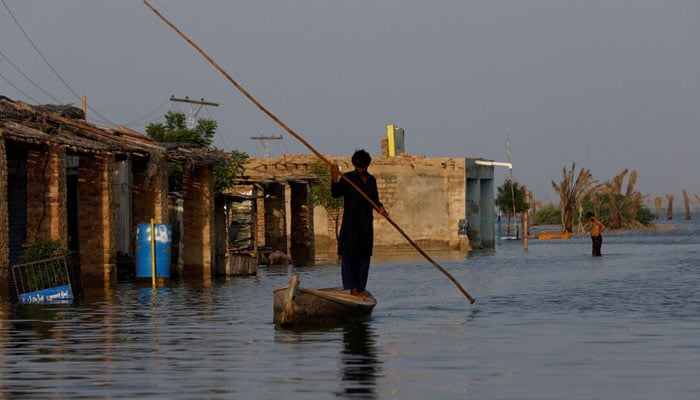Population puzzle in 2024
Although Pakistan made significant strides in 2024 across various fronts, many challenges remain unaddressed

Pakistan, the fifth most populous country in the world, bids farewell to 2024 — and yet the unfinished population growth business concerns politicians, leaders, academics, and development practitioners.
As the country leaves 2024 behind, it does so with a better understanding of population dynamics and the impact of population growth and human capital on prosperity, welfare, and livelihoods. Although Pakistan has made significant strides in 2024 across various fronts, many challenges remain unaddressed.
Reflecting on the year, I am encouraged to see Pakistan taking steps to calibrate economic growth with population growth. Demographic and economic cycles are interconnected, with higher fertility rates among poorer families perpetuating cycles of poverty.
This produces vulnerable individuals who suffer from poor health, lower education levels, limited income opportunities, higher economic dependency ratios, and increased unemployment rates.
These dynamics exacerbate social and economic inequalities, erode the middle class, and threaten stability, social cohesion, and even human security. The widespread, cross-cutting challenges to survival, livelihood, and dignity, ultimately limit individuals’ agency to shape and influence the country’s future.
In 2024, both the federal and provincial governments took significant steps to pave the way for an evidence-based population and development agenda.
These steps included implementing the population census, organising the first-ever data festival, the launch of the Data for Development (D4D) initiative, and the establishment of Pakistan data portal as a centralised hub for data users including policymakers, researchers, and development practitioners to enhance the visualisation and analysis of data.
This year, marked by major milestones, also saw the release of the landmark report on Pakistan 50+ which explores future demographic trends and scenarios to align population growth with economic development.
Population policies were drafted in Punjab and Azad Jammu and Kashmir, and youth policies were launched in Gilgit-Baltistan and Balochistan.
Positive progress is being made towards integrating population and health departments, and there was a slight opening to critical upstream issues in the public domain such as discussions on the delink of the population growth from the National Finance Commission (NFC) formula and the allocation of seats in the assemblies.
The country also demonstrated its commitment by increasing financial allocations for family planning commodities and supply chain management. In addition, several pieces of legislation were passed to support to end gender-based violence including child marriage, and the establishment of anti-rape crisis cells in multiple provinces and Islamabad.
To bridge the gap in the health workforce, Pakistan launched a four-year undergraduate BSc programme in midwifery. Some provinces also took significant steps to implement the Violence Against Women and Gender Safety Acts, establishing virtual women’s police stations, women safety apps, and functional gender-based violence helplines.
All aforementioned steps are important moves in the right direction. Yet, many key recommendations to prioritise the population agenda across various levels of executive and legislative authorities remain either in the pipeline or are yet to be initiated.
The population conference organised by the chief justice in 2023 called for the implementation of the Council of Common Interests’ (ICC) recommendations and the National Action Plan (NAP) in the most cost-effective development manner.
It also emphasised the need to regulate coordination mechanisms including the federal and provincial task forces and accountability forums such as Country Engagement Working Group (CEWG) and FP2030.
The conference further called for the allocation of Rs10 billion per year (non-lapsable) to the Pakistan Population Fund, outside the NFC framework, and incentivising local production of contraceptives.
The most strategic recommendation is to reform the NFC formula by delinking it from population size, reducing the weight of the population factor, and incorporating indices related to women’s empowerment and human capital.
One viable option could involve freezing the population factor at the levels of the previous population census (1998, 2017, or 2023) for a certain period, following the successful experiences initiated by India and Bangladesh in 2000.
Delinking of the NFC from population growth will encourage provinces to adopt progressive population programmes, improve both the federal and provincial statistical system, and enhance data quality and accessibility — prerequisites for sound, evidence-based planning and monitoring.
A human capital-centred NFC formula rather than one focused on population size will improve Pakistan’s performance in the international economic and social development indicators.
Another unfinished business is addressing population issues from a multi-sectoral perspective by mainstreaming population factors in all development policies and prioritising the population agenda into concrete action. This includes increasing domestic financing and mobilising external financial resources.
It is advisable to revisit the high turnover of senior bureaucrats to preserve the institutional memory and ensure the continuity of long-term programming.
Social protection programmes led by the government, such as the Benazir Income Support Programme (BISP), should also incorporate demand-side financing mechanisms to improve women’s access to quality reproductive health services, including family planning, particularly for marginalised women.
The country requires bold legislation and measurable enforcement measures to achieve a genuine transformation in the social and gender norms, aiming to remove discriminatory barriers women face.
Despite having affirmative legislation for women, the country struggles with enforcement and significant discrepancies between laws and practice such as in the case of the legal age of child marriage.
There is also a need to expand counselling services for voluntary birth spacing, improve access to sexual and reproductive health care, and ensure a violence-free environment that enables women’s full participation in public life.
Pakistan is moving in the right direction, yet the pace is slower and softer than necessary, especially in a global landscape where priorities are shifting due to demographic transitions in many countries. To sustain the national development progress, Pakistan must move faster and stronger to avoid missing global partnerships.
The writer is the UNFPA representative in Pakistan.
Disclaimer: The viewpoints expressed in this piece are the writer’s own and don’t necessarily reflect Geo.tv’s editorial policy.
Originally published in The News







